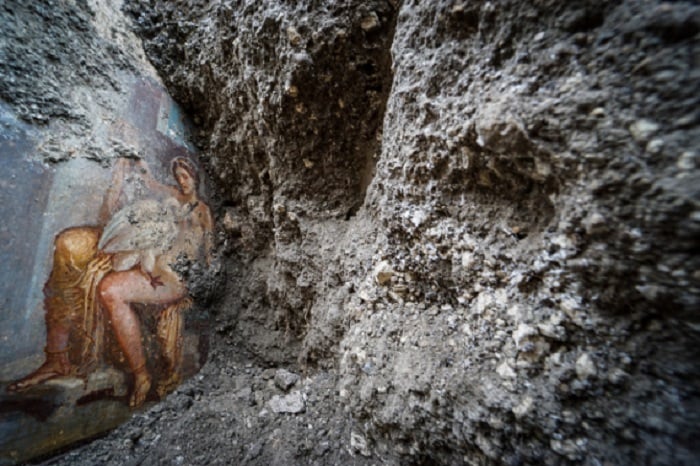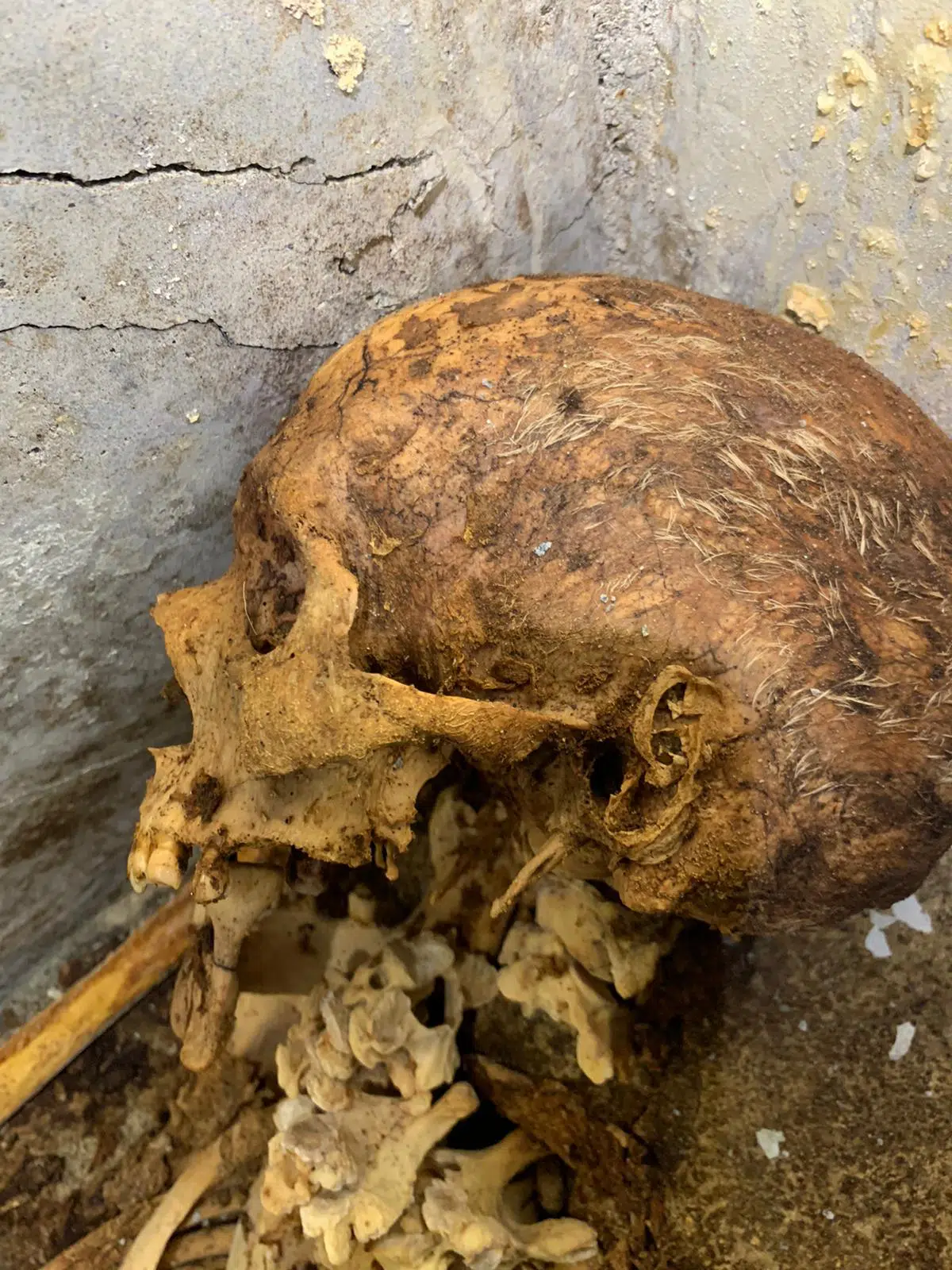
A stunning fresco discovered amongst the ruins of ancient Pompeii in 2018 depicts a sensual scene of the Roman god Jupiter, disguised as a swan, and Leda, the Greek mythical queen of Sparta and wife of King Tyndareus.
The figure of Queen Leda being impregnated by the god in swan form was a fairly common home decoration theme in Pompeii and Herculaneum, another town destroyed in A.D. 79 by the volcanic eruption of Mount Vesuvius near present-day Naples.
But Pompeii Archaeological Park director Massimo Osanna praised this particular fresco as exceptional because it was painted to make it appear that Leda was looking back at the viewer of the fresco as they entering the bedroom.
The fresco depicts the Greek Queen at Pompeii with sensuality
“Leda watches the spectator with a sensuality that is absolutely pronounced,” Osanna told the Italian news agency ANSA.
According to Greek and Roman mythology, the twins Castor and Pollux (“the Dioscuri”) would be born as a result of Leda’s trysts, first with Jupiter and then with Tyndareus.
Not only these giants of Roman and Greek mythology but the stunningly beautiful Helen, the future wife of King Menelaus of Sparta and the cause of the Trojan War, was also born of Leda as was Clytemnestra, the bride (and assassin) of King Agamemnon of Argos, who was the brother of Menelaus.
#Pompeii. The myth of Leda and the Swan depicted in a fresco, which was discovered during stabilisation and re-profiling works on the excavation fronts. More info: https://t.co/Q8THRo6jEI pic.twitter.com/W1nNSbySxx
— Pompeii Sites (@pompeii_sites) November 19, 2018
Osanna said one hypothesis is that the home’s owner was a rich merchant who wanted to give the impression he was culturally advanced by incorporating myth-inspired frescoes.
Greek influences in Pompeii

A skeleton discovered recently in Pompeii, the Roman city which was completely destroyed after the eruption of the volcano Vesuvius in 79 AD, proves that Greek culture was thriving in ancient Rome.
The discovery was made in the necropolis of Porta Sarno, an area not yet open to the public located in the east of Pompeii’s urban center.
A skull bearing tufts of white hair and part of an ear, as well as bones and fragments of fabric, was found in the tomb. It has been described as “one of the best-preserved skeletons ever found in the ancient city.”
An inscription on the dead man’s tomb identifies him as Marcus Venerius Secundio; incredibly, it appears to indicate that he helped stage performances of Greek plays. It says the deceased “gave Greek and Latin ludi,” or performances.